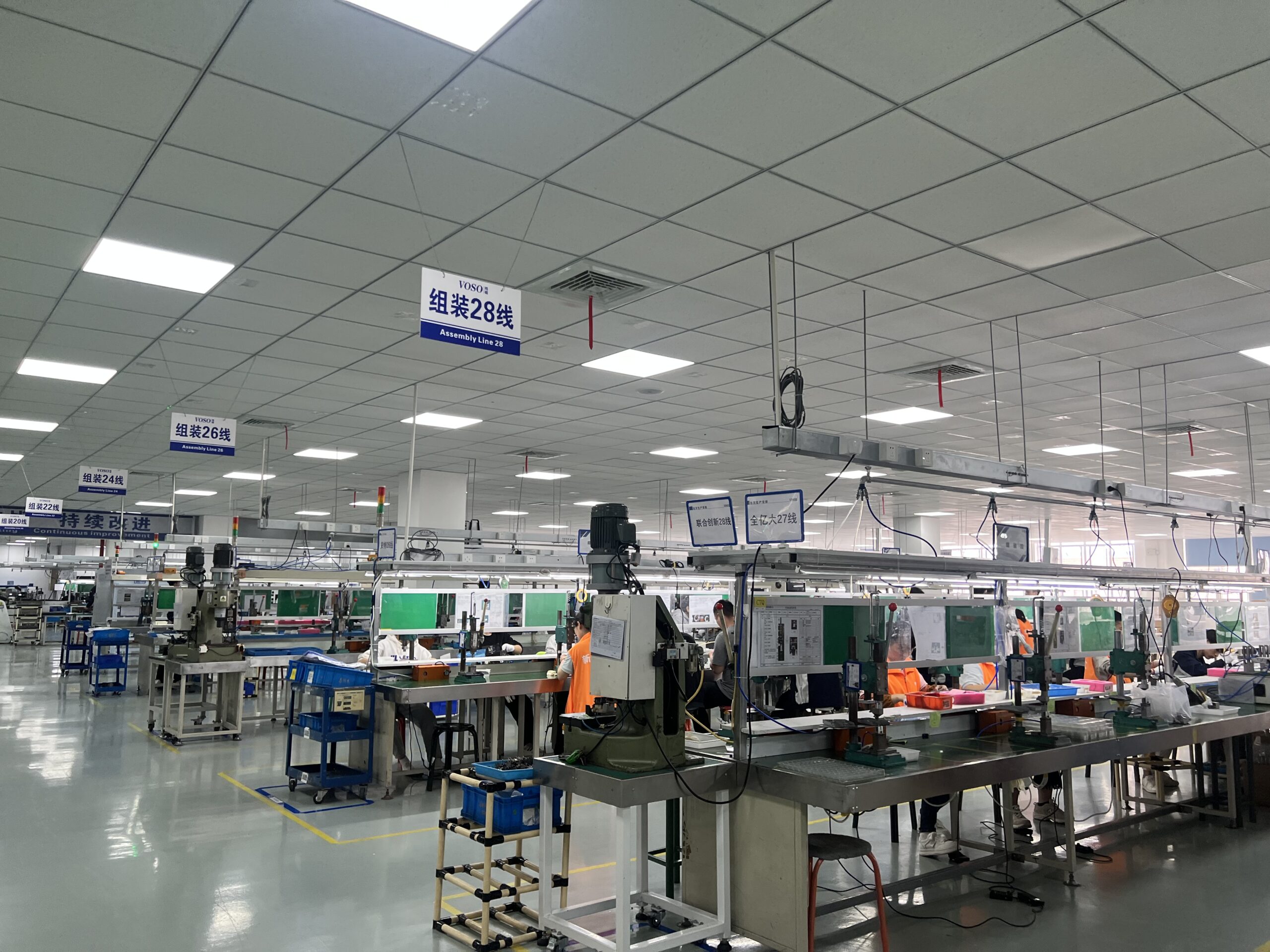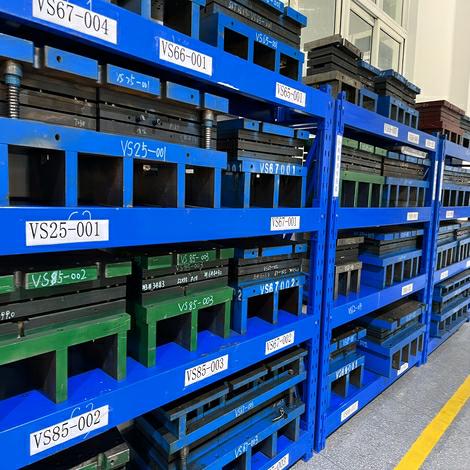Why MIM (Metal Injection Molding)
Introduction
Metal Injection Molding (MIM) is a cutting-edge manufacturing process that combines the versatility of plastic injection molding with the strength and integrity of metal. This innovative technology is revolutionizing the production of complex metal parts across various industries. In this article, we will explore the core advantages of MIM, including its cost-effectiveness, superior design flexibility, and enhanced mechanical properties, to understand why MIM is becoming the preferred choice for manufacturers seeking high-quality, precision parts.

Cost-Effective Production
Material Efficiency
One of the primary benefits of Metal injection molding MIM is its exceptional material efficiency. Traditional metalworking methods, such as machining, often result in significant material waste as excess metal is cut away to achieve the desired shape. In contrast, MIM uses nearly 100% of the raw material, reducing waste and lowering material costs. The metal powder used in MIM can be precisely controlled, ensuring that only the necessary amount is used, which is particularly advantageous for high-value materials.
This comprehensive material list will help customers understand the value and versatility that MIM brings to their manufacturing needs.
Stainless Steels
17-4 PH Stainless Steel
- Characteristics: High strength, excellent corrosion resistance, good mechanical properties.
- Applications: Aerospace, automotive, medical devices, and consumer products.
- Value to Customers: Provides a balance of strength and corrosion resistance, ideal for critical components requiring long-term reliability.
316L Stainless Steel
- Characteristics: Exceptional corrosion resistance, non-magnetic, good weldability.
- Applications: Marine environments, medical implants, food processing equipment.
- Value to Customers: Perfect for applications where corrosion resistance and biocompatibility are crucial.
Low Alloy Steels
4140 Steel
- Characteristics: High strength, toughness, good fatigue resistance.
- Applications: Automotive parts, industrial machinery, tools.
- Value to Customers: Suitable for high-stress applications, providing durability and long service life.
8620 Steel
- Characteristics: Good case hardening properties, excellent toughness and ductility.
- Applications: Gears, crankshafts, fasteners.
- Value to Customers: Ideal for components requiring a hard surface and a tough core, enhancing performance and wear resistance.
Tool Steels
M2 Tool Steel
- Characteristics: High hardness, excellent wear resistance, good toughness.
- Applications: Cutting tools, dies, punches.
- Value to Customers: Ensures long tool life and consistent performance in demanding manufacturing environments.
D2 Tool Steel
- Characteristics: High wear resistance, high compressive strength, moderate toughness.
- Applications: Blades, industrial tools, molds.
- Value to Customers: Provides durability and precision, reducing maintenance and replacement costs.
Titanium Alloys
Ti-6Al-4V (Grade 5)
- Characteristics: High strength-to-weight ratio, excellent corrosion resistance, biocompatibility.
- Applications: Aerospace, medical implants, high-performance automotive parts.
- Value to Customers: Offers lightweight solutions with superior strength and corrosion resistance, ideal for critical and high-performance applications.
CP-Ti (Commercially Pure Titanium)
- Characteristics: Excellent corrosion resistance, good ductility, biocompatibility.
- Applications: Medical devices, chemical processing, marine applications.
- Value to Customers: Provides exceptional corrosion resistance and biocompatibility, suitable for sensitive environments.
Superalloys
Inconel 718
- Characteristics: High temperature strength, oxidation and corrosion resistance, excellent fatigue resistance.
- Applications: Aerospace engines, gas turbines, chemical processing equipment.
- Value to Customers: Ensures reliability and performance in extreme environments, extending the life of critical components.
Hastelloy X
- Characteristics: Outstanding high-temperature strength, excellent oxidation resistance, good formability.
- Applications: Aerospace, industrial furnaces, chemical plants.
- Value to Customers: Provides durability and performance in high-temperature and corrosive environments.
Copper Alloys
CuNi2SiCr (Copper-Nickel-Silicon-Chromium)
- Characteristics: High strength, excellent electrical conductivity, good corrosion resistance.
- Applications: Electrical connectors, heat exchangers, marine hardware.
- Value to Customers: Balances strength and conductivity, ideal for electrical and thermal applications.
Bronze (CuSn8)
- Characteristics: Good wear resistance, excellent machinability, good corrosion resistance.
- Applications: Bearings, bushings, gears.
- Value to Customers: Provides reliable performance in mechanical applications, reducing friction and wear.
Magnetic Materials
Fe-Ni (Iron-Nickel Alloys)
- Characteristics: High magnetic permeability, low coercivity, good corrosion resistance.
- Applications: Sensors, actuators, magnetic shielding.
- Value to Customers: Enhances magnetic performance in electronic and electromagnetic applications.
SmCo (Samarium-Cobalt)
- Characteristics: High magnetic strength, excellent thermal stability, good corrosion resistance.
- Applications: High-performance motors, sensors, aerospace components.
- Value to Customers: Offers stable magnetic properties at high temperatures, ensuring reliable performance.
Reduced Manufacturing Costs
MIM reduces manufacturing costs in several ways. The process eliminates the need for extensive machining and assembly, which are typically required in traditional manufacturing methods. Instead, complex shapes and fine details are molded directly into the part, reducing the need for secondary operations. This streamlining of the production process leads to significant cost savings. For example, a case study in the automotive industry showed that switching to MIM reduced production costs by 30%, thanks to lower labor and material expenses.
High Volume Production Capabilities
MIM is highly suitable for large-scale production. The injection molding process allows for the rapid production of high volumes of parts with consistent quality. Once the molds are created, they can be used to produce thousands or even millions of parts with minimal variation. This consistency is critical in industries where uniformity and reliability are paramount. Moreover, the scalability of MIM means that as demand increases, production can be easily ramped up without compromising quality or incurring significant additional costs.

Superior Design Flexibility
Complex Geometries
MIM offers unparalleled design flexibility, allowing for the creation of intricate and detailed parts that would be difficult or impossible to produce with traditional methods. The process enables the production of complex geometries with thin walls, undercuts, and fine details, all in a single step. This capability opens up new possibilities for product design and innovation. For instance, the medical device industry has leveraged MIM to produce complex surgical instruments with features that enhance their functionality and performance.
Customization Options
Another key advantage of MIM is the ability to customize parts to meet specific requirements. A wide range of materials can be used in the MIM process, including stainless steel, titanium, and various alloys, each offering different properties such as strength, hardness, and corrosion resistance. This versatility allows manufacturers to select the most appropriate material for their application. Additionally, the MIM process can incorporate multiple materials in a single part, providing even greater design flexibility and functionality.
Precision and Accuracy
The MIM process is renowned for its precision and accuracy. The parts produced through MIM exhibit tight tolerances and high dimensional accuracy, making them suitable for applications where precision is critical. In the aerospace industry, for example, MIM components are used in jet engines and other critical systems where even minor deviations can have significant consequences. The ability to produce highly accurate parts consistently is a testament to the reliability and sophistication of the MIM process.
Enhanced Mechanical Properties
Strength and Durability
MIM parts are known for their superior mechanical properties. The sintering process, which follows the molding stage, results in parts with high density and strength comparable to those produced by traditional forging and casting methods. This strength and durability make MIM parts ideal for demanding applications such as automotive components, where performance and longevity are crucial. For example, MIM is used to produce gear components that must withstand high stresses and wear over time.
Consistency and Reliability
Consistency and reliability are hallmarks of MIM. The controlled process parameters ensure that each part produced meets stringent quality standards. This reliability is essential for industries that require high-performance components with minimal variation. The consistency achieved with MIM also translates to fewer defects and reduced inspection and testing requirements, further lowering production costs and increasing efficiency.
Surface Finish and Aesthetic Quality
MIM parts can achieve excellent surface finishes straight out of the mold, often requiring little to no additional finishing. This high-quality finish is particularly important for consumer products and medical devices where appearance and tactile feel are important. For instance, in the consumer electronics industry, MIM is used to produce sleek and aesthetically pleasing components for smartphones and other gadgets, enhancing their overall appeal and user experience.

Applications of MIM
Automotive Industry
In the automotive industry, MIM is used to produce a wide range of components, from fuel injector parts to transmission components. The ability to produce complex shapes with high precision and durability makes MIM an ideal choice for automotive manufacturers looking to enhance performance while reducing costs. Additionally, the weight savings achieved with MIM parts contribute to improved fuel efficiency and reduced emissions.
Medical Devices
MIM is particularly valuable in the medical device industry, where precision and reliability are paramount. MIM allows for the production of complex surgical instruments, orthodontic appliances, and implantable devices with excellent biocompatibility and mechanical properties. Case studies have shown that MIM can produce medical devices with superior performance and consistency, leading to better patient outcomes and increased safety.
Consumer Electronics
The consumer electronics industry benefits greatly from MIM’s ability to produce small, intricate parts with high strength and excellent surface finishes. Components such as smartphone frames, connectors, and hinges are commonly made using MIM, providing the necessary durability and aesthetic quality. The precision of MIM also ensures that these components fit perfectly within the tight tolerances required in electronic devices, contributing to their overall performance and reliability.
Conclusion
Metal Injection Molding (MIM) offers a host of advantages, from cost-effective production and superior design flexibility to enhanced mechanical properties. The process’s ability to produce complex, high-quality parts with minimal waste and at a lower cost makes it an attractive option for manufacturers across various industries. As technology advances and the demand for precision components grows, MIM will continue to play a crucial role in meeting these needs, driving innovation, and delivering reliable solutions. Manufacturers looking for cost-effective, flexible, and high-quality manufacturing solutions should consider MIM as a viable and advantageous option.


